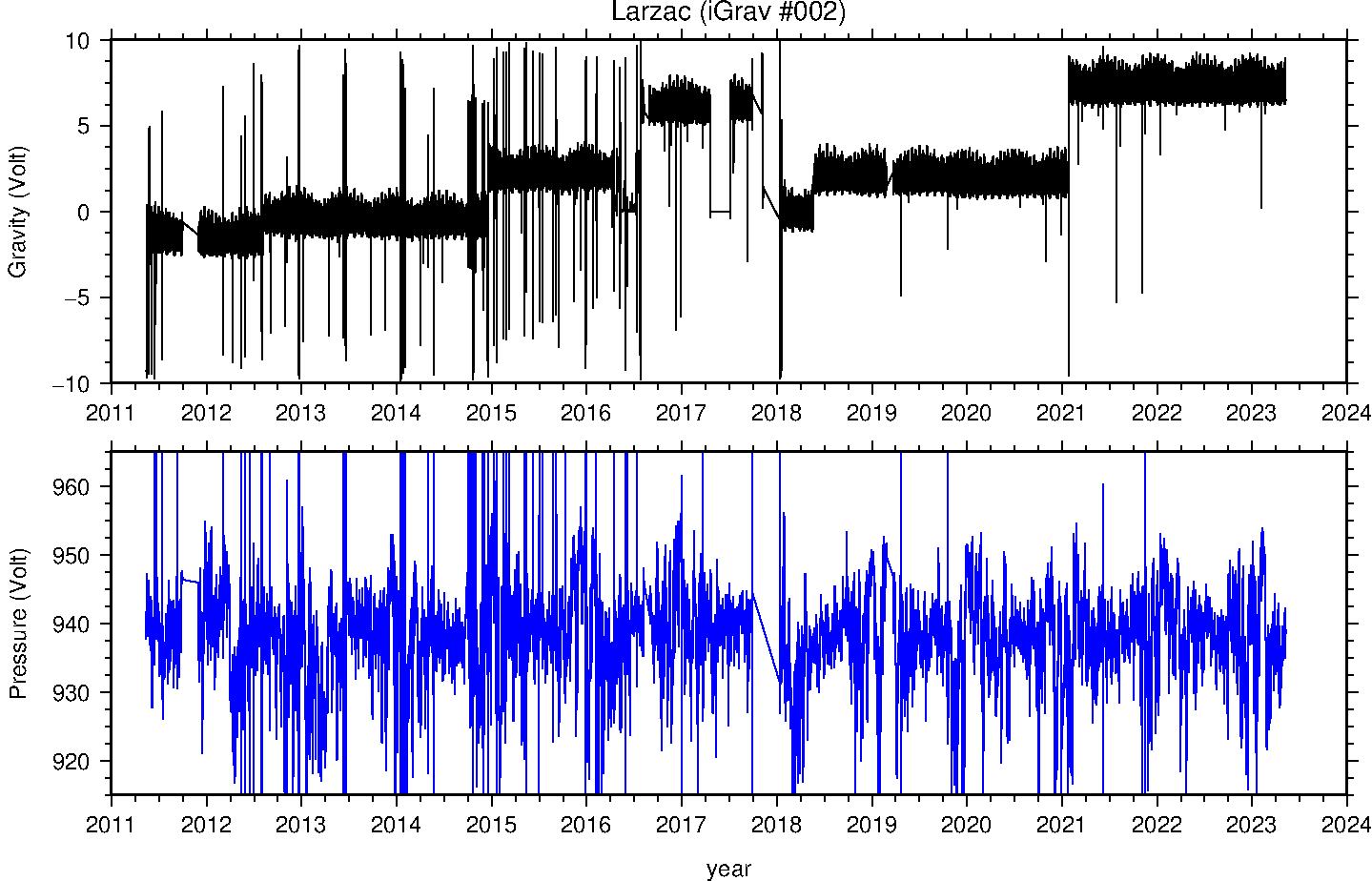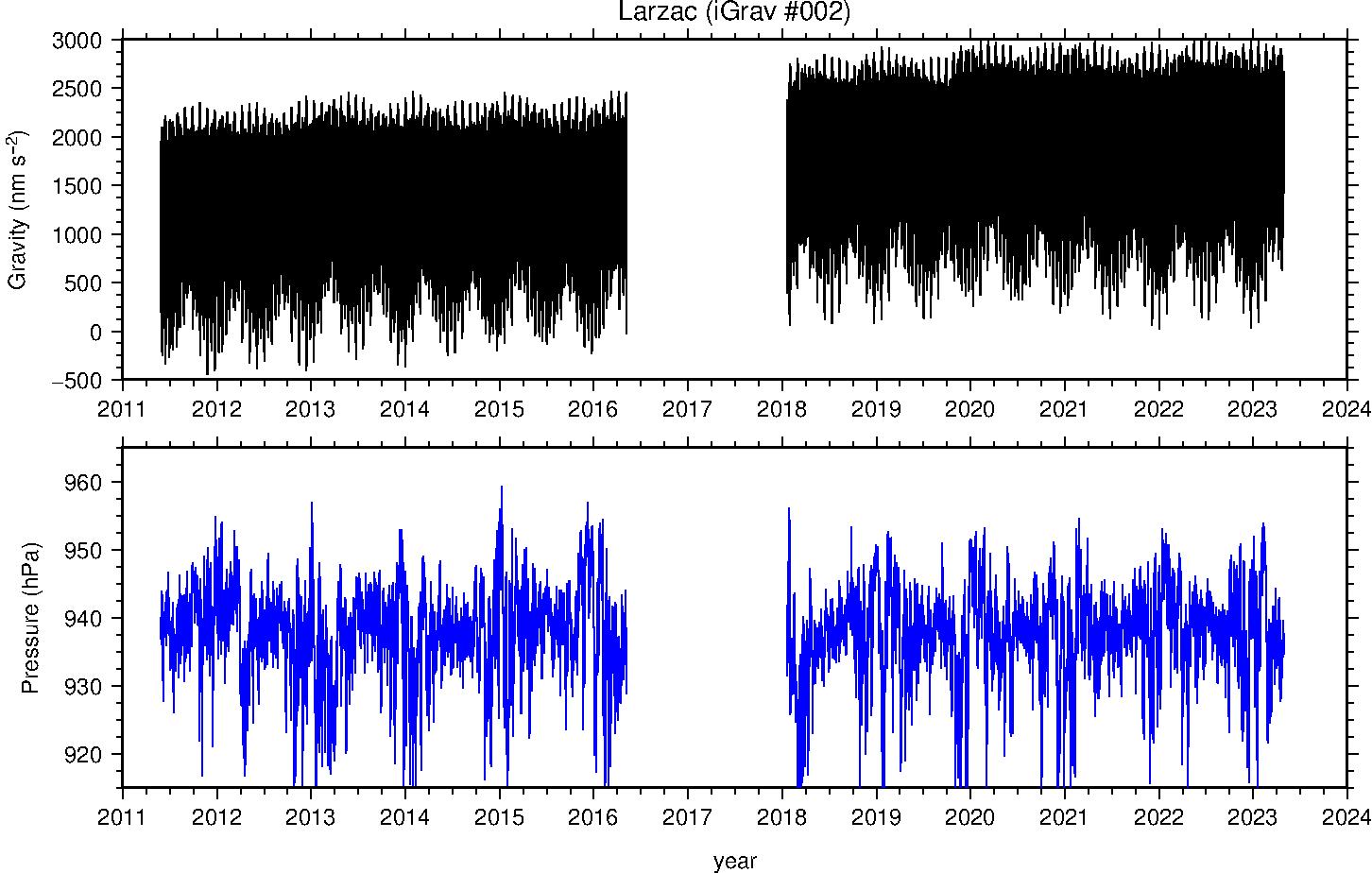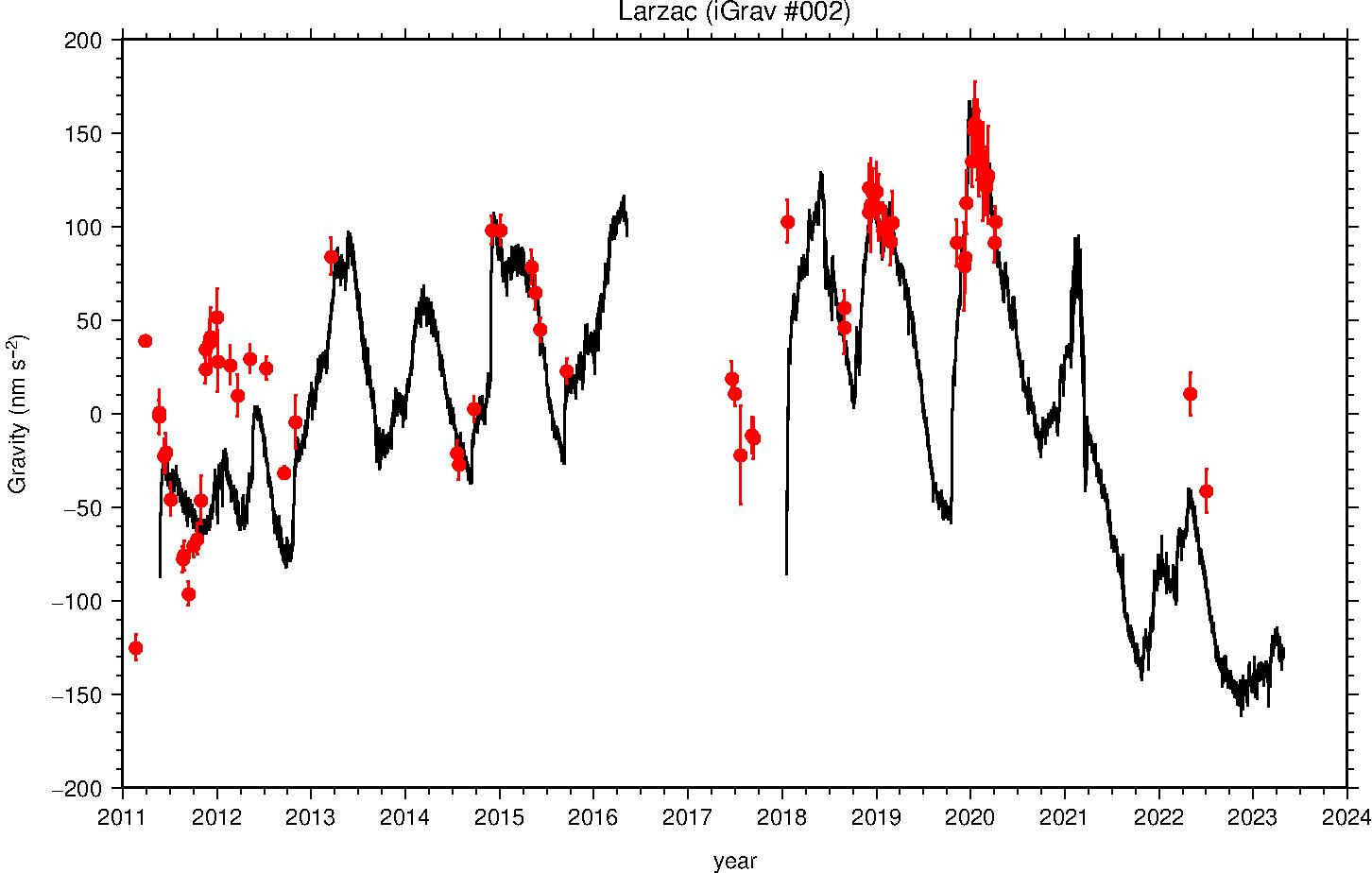Earth Tide Service (IGETS)
The Durzon site is located on a karstic aquifer with an area of 100 km2 which supplies the Durzon Spring (average discharge 1.4 m3/s). This spring provides a natural supply of drinking water to the Aveyron portion of Larzac. The site is equipped to monitor the discharge from the spring (Grands Causses Nature Park). The Montpellier Geoscience Laboratory provides rainfall monitoring, measurements of underground flows, tiltmeter measurements of the deformations associated with recharge, and surface and underground gravity measurements of selected sites. Additional hydrological and geochemical monitoring are provided by the Montpellier Hydrosciences laboratory. The main scientific issue concerns the dynamics of the transport and storage of water, mainly in the unsaturated zone.
The Larzac Karstic “Observatory” came to prominence in 2006 with the initiation of the ANR ECCO PNRH Project entitled “Hydrology and Geodesy” by Montpellier Geosciences and Montpellier Hydrosciences and was continued with the ANR HydroKarstG2 between 2009 and 2012. The Larzac observatory is now a permanent site of the SNO H+ and of the SNO RESIF. This involved the installation of gravity instruments (a permanent supraconducting gravimeter, repeated measurements with a FG5 absolute gravimeter) which can be used for validation and comparison purposes. This instrumentation was supplemented by other geodesic (GPS), meteorologic, and hydrogeologic tools, designed to make local determinations of 1) vertical ground movements and the temporal characteristics of water flow in the infiltration zone.
You can access here different IGETS products, for the GWR iGrav #002 instrument also available at the IGETS database, i.e.:
The description of the formats/products can be found in the EOST products document.

|

|

|
| download data | download data | download data |
Champollion, C., Deville, S., Chéry, J., Doerflinger, E., Moigne, N. L., Bayer, R., Vernant, P., & Mazzilli, N. (2018). Estimating epikarst water storage by time-lapse surface-to-depth gravity measurements. Hydrology and Earth System Sciences, 22(7), 3825-3839.
Fores, B., Champollion, C., Mainsant, G., Albaric, J., & Fort, A. (2018). Monitoring Saturation Changes with Ambient Seismic Noise and Gravimetry in a Karst Environment. Vadose Zone Journal, 17(1).
Ménoret, V., Vermeulen, P., Le Moigne, N., Bonvalot, S., Bouyer, P., Landragin, A., & Desruelle, B. (2018). Gravity measurements below 10− 9 g with a transportable absolute quantum gravimeter. Scientific reports, 8(1), 12300.
Fores, B., Champollion, C., Le Moigne, N., & Chery, J. (2017). Impact of ambient temperature on spring-based relative gravimeter measurements. Journal of Geodesy, 91(3), 269-277.
Fores, B., Champollion, C., Le Moigne, N., Bayer, R., & Chéry, J. (2017). Assessing the precision of the iGrav superconducting gravimeter for hydrological models and karstic hydrological process identification, Geophysical Journal International, Volume 208, Issue 1, 1 January 2017, Pages 269–280, https://doi.org/10.1093/gji/ggw396.
Deville, S., Jacob, T., Chery, J., and Champollion, C. (2012), On the impact of topography and building mask on time varying gravity due to local hydrology, Geophysical Journal International.
Jacob, T., Bayer, R., Chery, J., Jourde, H., Moigne, N. L., Boy, J.-P., Hinderer, J., Luck, B., and Brunet, P. (2008), Absolute gravity monitoring of water storage variation in a karst aquifer on the larzac plateau (Southern France), Journal of Hydrology, 359(1-2), 105-117.
If you use these data, please cite: Le Moigne, N., and C. Champollion(2020): Superconducting Gravimeter Data from Larzac Observatory - Level 1. GFZ Data Services. https://doi.org/10.5880/igets.la.l1.001.